Can Essential Oils Change Hair Color
Essential oils have gained popularity for their numerous benefits, including potential to change hair color.
We explore the science behind essential oils and their ability to enhance hair color.
Learn about the benefits and risks of using essential oils for hair loss change, and get tips on how to incorporate them into your hair care routine for optimal results.
Key Takeaways:
What Are Essential Oils?
Essential oils are natural plant extracts that are highly concentrated and contain the essence, fragrance, and beneficial properties of the plant they are derived from.
These oils have been used for centuries by various cultures for their therapeutic and medicinal benefits. The process of extracting essential oils involves methods like distillation, cold pressing, or solvent extraction.
Rosemary oil
is known for its invigorating scent and ability to improve focus and memory.
Cedarwood oil
is commonly used for its calming and grounding effects.
Lemon oil
has a refreshing aroma and is often used for its cleansing properties.
Lavender oil
is famous for its calming and relaxing scent, making it a popular choice for promoting sleep and reducing anxiety.
How Do Essential Oils Work?
Essential oils work through the inhalation or absorption of their volatile compounds, which can affect the limbic system in the brain, influencing emotions, mood, and physiological responses.
When these aromatic molecules enter the body, they stimulate the sense of smell, sending signals to the olfactory bulb. From there, the brain processes these scents, activating memories and triggering diverse reactions. This intricate process can create calming, energizing, or even healing effects depending on the fragrance and composition of the oil being used. Essential oils not only influence emotions but can also have a conditioning impact on the body, promoting relaxation and stress relief. Some essential oils have been found to support natural processes like hair growth through their biochemical properties.
Can Essential Oils Change Hair Color?
Essential oils can be used to enhance or subtly alter hair color, although their effect may vary depending on the individual’s hair type, current color, and application method.
Among the diverse array of essential oils,cedarwood, rosemary, and lemon oil are particularly well-known for their potential to enhance hair color. Cedarwood oil is often used to deepen the hue of brunette tones, while rosemary oil is favored for its ability to add shine and dimension to darker hair shades. On the other hand, lemon oil is popular for its brightening effects on blonde hair, helping to maintain a vibrant and light appearance. The unique properties of these essential oils can make them valuable allies in the quest for personalized and natural-looking hair color transformations.
What Are the Best Essential Oils for Hair Color Change?
When considering essential oils for changing hair color, options like rosemary, cedarwood, and lemon oil are popular choices due to their natural properties and potential to enhance or highlight different hues.
Rosemary oil, with its herbaceous aroma, is not only known for promoting hair growth but can also help darken and add richness to hair color. It works best for brunettes looking to deepen their shade or cover grays naturally.
Cedarwood oil, on the other hand, has a warm, woodsy scent and is great for enhancing red and copper tones in hair. It can impart a subtle warmth and vibrancy to dull hair.
Lemon oil is cherished for its clarifying properties, which can lighten and brighten hair, especially for blondes seeking a sun-kissed look. It is also beneficial for oily scalp issues.
What Are the Benefits of Using Essential Oils for Hair Color Change?
Utilizing essential oils for hair color change offers a range of benefits, including a natural alternative to harsh chemicals, promotion of hair health, and the potential to enhance the natural color of the hair.
These oils are packed with essential nutrients and vitamins that deeply nourish the hair, leaving it soft and shiny. Apart from coloring, essential oils can also help reduce frizz, making your hair more manageable and smooth.
The regular use of essential oils can stimulate hair growth and improve overall scalp health. They can address issues like dryness and breakage, creating a healthier environment for hair to thrive.
Natural Alternative to Harsh Chemicals
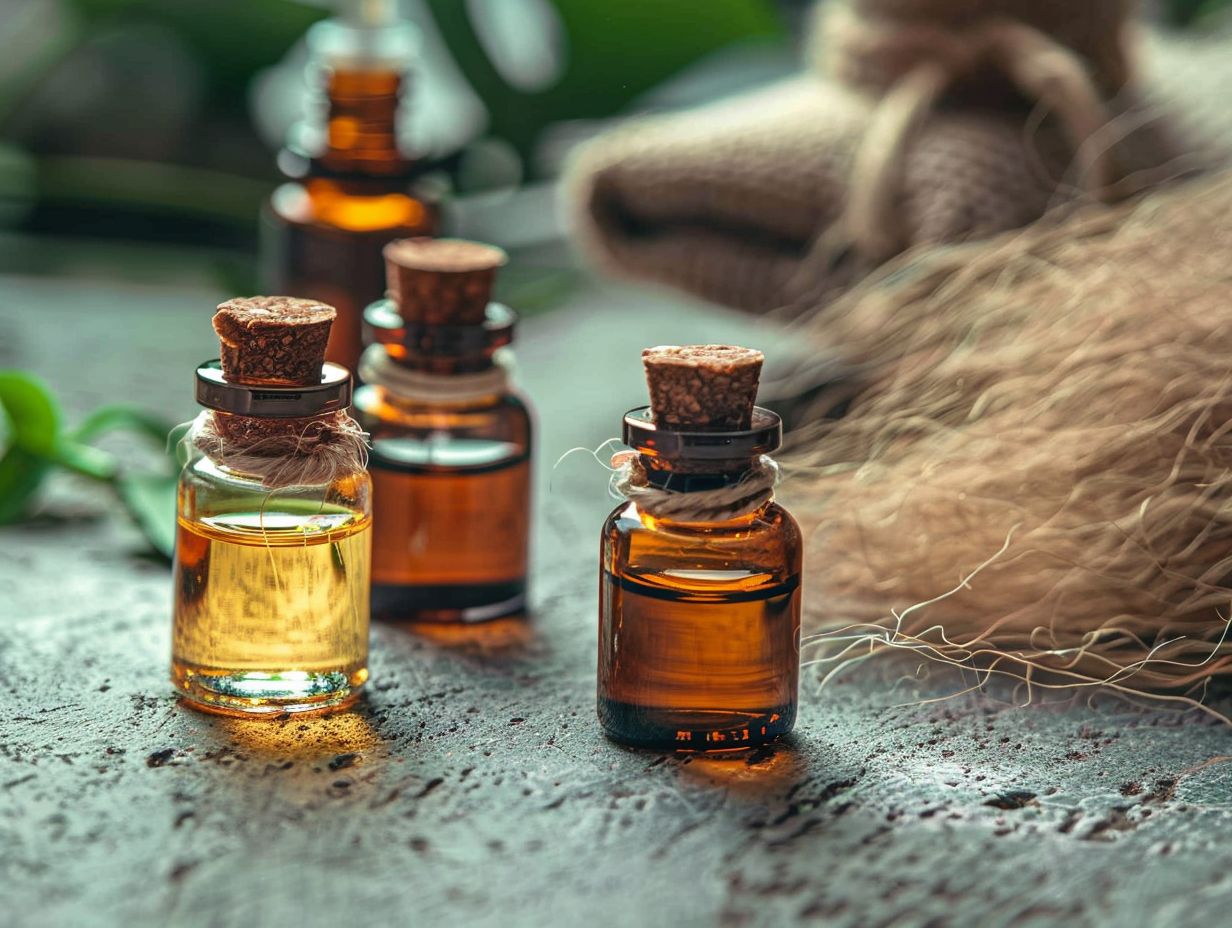
These harmful chemicals in traditional hair colorants can lead to damage to the hair follicles, dryness, and even scalp irritation. The use of essential oils provides a safer alternative that nourishes the hair while providing vibrant color. In addition, essential oils are known for their aromatherapy benefits, offering a calming and relaxing experience during the coloring process.
With essential oils, you can achieve beautiful hair color without compromising the health of your hair or exposing yourself to potentially toxic substances. The natural properties of essential oils not only color the hair gently but also promote overall hair health and shine.
Promotes Hair Health
Plus color change, essential oils contribute to overall hair health by nourishing the scalp, promoting hair growth, and providing essential nutrients like Vitamin E and fatty acids for conditioning.
Essential oils play a vital role in improving hair growth by increasing blood circulation to the scalp, stimulating hair follicles, and encouraging the production of healthy, strong strands. They also help in combating issues like dandruff and dryness, creating a healthier environment for hair to thrive.
The strengthening properties of essential oils help fortify hair follicles, reducing breakage and promoting longer, thicker hair. They can also aid in balancing the scalp’s natural oils, preventing excess oiliness or dryness and creating the ideal environment for healthy hair growth.
Can Enhance Hair Color
Certain essential oils have the ability to enhance the natural color of the hair, add shine, and manage frizz, offering a dual benefit of color enhancement and improved hair texture.
One key aspect where essential oils shine in hair care is their ability to deeply nourish and strengthen the hair follicles, promoting healthier growth and appearance. For those struggling with dry or damaged hair, oils like argan and coconut can work wonders by locking in moisture and restoring vitality to lackluster locks.
Plus their moisturizing properties, certain oils such as lavender and chamomile are known for their calming effects, making them excellent choices for those looking to soothe not just their hair but also their scalp. The soothing aroma of these oils can create a relaxing spa-like experience during hair care routines.
Are There Any Risks or Side Effects of Using Essential Oils for Hair Color Change?
While generally safe, using essential oils for hair color change may pose risks such as skin irritation, allergic reactions, or changes in hair texture, particularly for individuals with sensitive skin or allergies.
Essential oils are highly concentrated plant extracts that can be potent and may not be suitable for everyone. Allergic reactions can manifest as redness, itching, or even swelling of the skin upon contact with certain oils.
For those with sensitive skin, essential oils have the potential to cause irritation and sensitivity, leading to discomfort and even dermatitis. It’s essential to perform a patch test before using any new oil to monitor for any adverse skin reactions.
Certain essential oils may have a drying effect on the hair, potentially causing brittleness, breakage, or even changes in hair color with prolonged use.
Skin Irritation
Skin irritation is a common side effect of using essential oils for hair color change, especially when applied in high concentrations or in combination with other irritating ingredients.
Some essential oils, such as peppermint, cinnamon, and lemongrass, contain high levels of certain compounds that can cause skin sensitization and irritation in some individuals. The presence of terpenes, aldehydes, or phenols in essential oils can exacerbate skin reactions, making it crucial to carefully select and dilute oils before use.
To minimize the risk of skin irritation, it’s recommended to conduct a patch test before applying any essential oil to a larger area. Diluting oils with a carrier oil, such as jojoba or coconut oil, can also help reduce the concentration of active compounds that may trigger reactions.
Allergic Reactions
Individuals with allergies, sensitive skin, or specific hair types may experience allergic reactions to certain essential oils used for hair color change, leading to redness, itching, or discomfort.
When essential oils come into contact with the skin, the body’s immune system can react differently based on various factors. For those with sensitive skin, even a small amount of potent essential oil can trigger a reaction.
Allergic reactions can manifest in several ways, from mild redness and itching to more severe symptoms like hives or even blistering. The type and intensity of the reaction can depend on the individual’s unique skin composition, level of sensitivity, and specific allergic triggers.
Can Cause Changes in Hair Texture
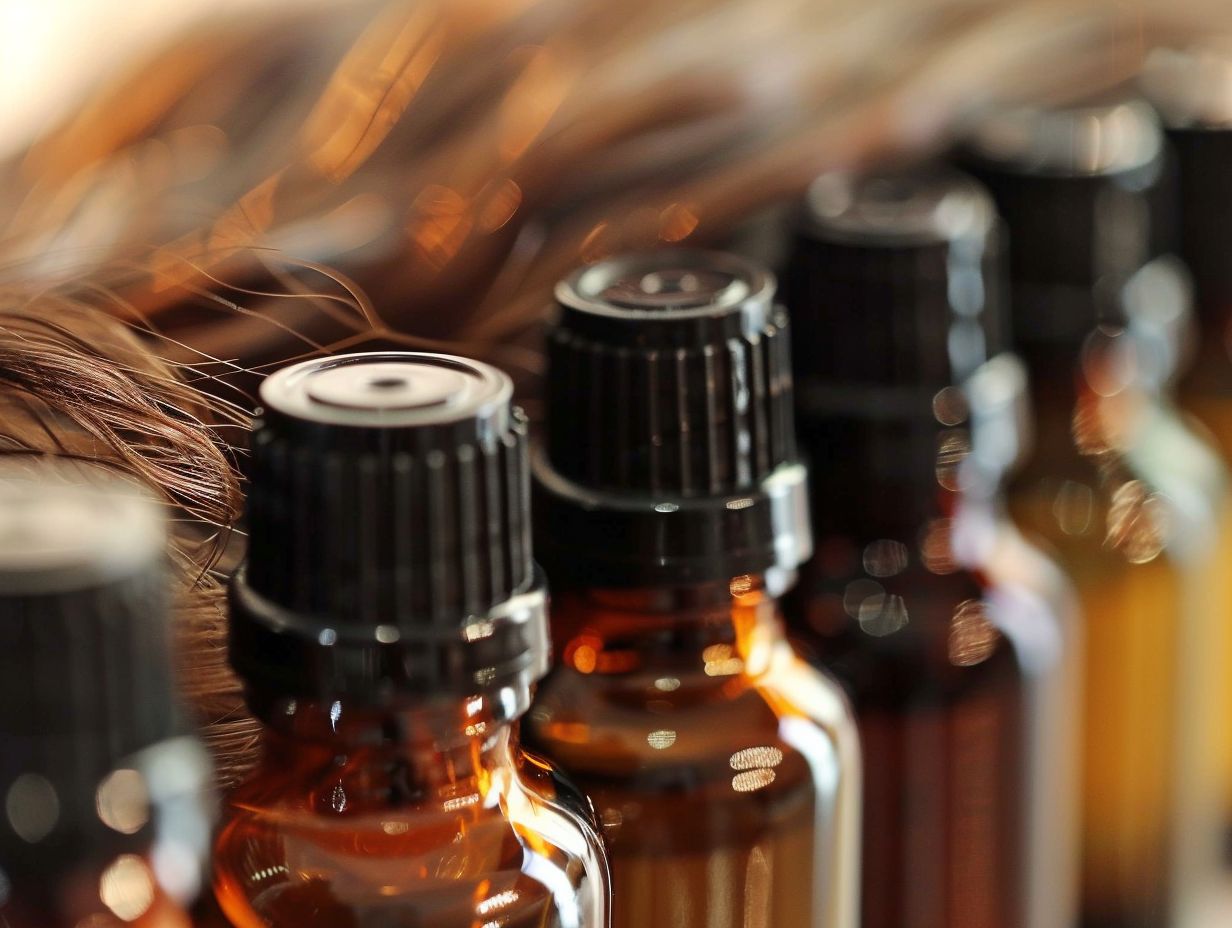
Essential oils, such as lemon oil and cedarwood oil, are known for their nourishing properties that can deeply penetrate the hair shaft. Lemon oil, for instance, is rich in vitamin C, which helps to strengthen the hair follicles and promote healthier growth.
When these oils are applied to the hair, they can help in sealing moisture, resulting in hydrated and conditioned strands. This enhanced hydration can contribute to the smoothness and silkiness of the hair, giving it a lustrous appearance.
The antioxidant properties of cedarwood oil can protect the hair from environmental damage, reducing frizz and enhancing manageability. Regular use of these oils can lead to improved hair volume and elasticity, creating a fuller and more vibrant look.
How Can Essential Oils Be Used to Change Hair Color?
Essential oils can be incorporated into hair care routines by adding them to existing products, creating DIY hair masks, or using them as a hair rinse to subtly alter or enhance hair color.
Incorporating essential oils into your hair care routine can be a fantastic way to promote healthy hair and scalp. One popular method is to mix a few drops of lavender oil with your favorite shampoo for added fragrance and potential scalp benefits. Creating homemade hair treatments by blending essential oils with carrier oils like coconut or argan oil can provide deep conditioning and nourishment. For those looking to enhance their hair color naturally, preparing a hair rinse with chamomile or rosemary oil can subtly brighten or darken hair tones.
Adding to Hair Care Products
One simple way to utilize essential oils for changing hair color is by adding a few drops to sulfate-free shampoos, conditioners, or hair sprays, enhancing their fragrance and potential color effects.
When blending essential oils with commercial hair products, it’s essential to choose sulfate-free options to avoid stripping the hair of its natural oils. By picking sulfate-free products, you ensure that the natural benefits of the essential oils are not counteracted by harsh chemicals.
To create your customized hair care solutions, start by selecting a base product that matches your hair type and needs. For example, if you have dry hair, opt for a moisturizing sulfate-free shampoo. Next, pick essential oils that cater to your specific hair goals, whether it’s promoting hair growth, reducing dandruff, or enhancing shine.
Once you have your chosen products, mix a desired amount of essential oil drops into the shampoo, conditioner, or hair spray. Remember that essential oils are potent, so start with a small quantity and adjust based on your preference.
For best results, shake the product well to ensure proper distribution of the essential oils. Allow the mixture to sit for a few minutes before rinsing or styling your hair, letting the oils penetrate the hair strands for optimal benefits.
Making DIY Hair Masks
DIY hair masks featuring essential oils can be a luxurious treat for the hair, combining nourishing ingredients with aromatic oils for a sensory and color-enhancing experience.
Creating your own hair masks at home allows you to customize the blend to cater to your hair’s specific needs, whether you’re looking to boost shine, add moisture, or enhance your natural hair color.
For those aiming to transform their hair color naturally, ingredients like rosemary, cedarwood, and lemon oil can work wonders. These oils not only nourish your hair but also have properties that can subtly change the tone or highlight different shades, giving your hair a new dimension.
Using as a Hair Rinse
Hair rinses infused with essential oils serve as a gentle method to alter hair color subtly, provide conditioning benefits, and leave a lingering fragrance for an added sensory experience.
When using essential oil hair rinses, start by selecting the appropriate essential oil based on your desired outcomes. For instance, lavender oil is great for promoting hair growth and calming the scalp, while rosemary oil can stimulate hair follicles and improve circulation. Next, dilute a few drops of the chosen essential oil in water and use it as a final rinse after shampooing and conditioning. Allow the soothing blend to envelop your hair, imparting moisture and nourishment while filling the air with a delightful aroma.
What Are Some Tips for Using Essential Oils for Hair Color Change?
To maximize the benefits of essential oils for changing hair color, consider conducting a patch test before full application, diluting oils with carrier oils, and selecting oils that promote both color enhancement and hair growth.
When conducting a patch test, it is crucial to apply a small amount of diluted oil on the inner arm and wait for at least 24 hours to observe any allergic reactions. Proper dilution is key to prevent skin irritation, with a general guideline of 2-3 drops of essential oil per tablespoon of carrier oil. Jojoba oil or coconut oil are excellent carrier oil options for hair applications, adding moisture and aiding in effective absorption.
For color enhancement, consider blends like rosemary and lavender essential oils which can promote a healthy scalp and stimulate hair follicles. The addition of lemon oil can aid in brightening blonde tones gently. Remember to always use high-quality, pure essential oils to ensure desired results without any harmful additives.
Frequently Asked Questions
Can Essential Oils Change Hair Color?
Yes, certain essential oils have been known to have a slight effect on hair color.
Which Essential Oils Can Change Hair Color?
Some of the most common essential oils known for changing hair color are chamomile, rosemary, and lemon.
How Do Essential Oils Change Hair Color?
Essential oils contain natural pigments and chemicals that can interact with hair pigment, causing a slight change in color.
Can Essential Oils Lighten Hair Color?
Yes, some essential oils like chamomile and lemon are known for their natural lightening properties on hair color.
Do Essential Oils Have Long-Lasting Effects on Hair Color?
No, essential oils can have a temporary effect on hair color and will fade over time with regular washing and exposure to sunlight.
Are There Any Risks of Using Essential Oils to Change Hair Color?
While essential oils are generally safe to use, it’s important to do a patch test before using them on your hair to check for any potential allergies or sensitivities. Also, it’s best to dilute essential oils with a carrier oil before applying them to your hair to avoid any potential scalp irritation.

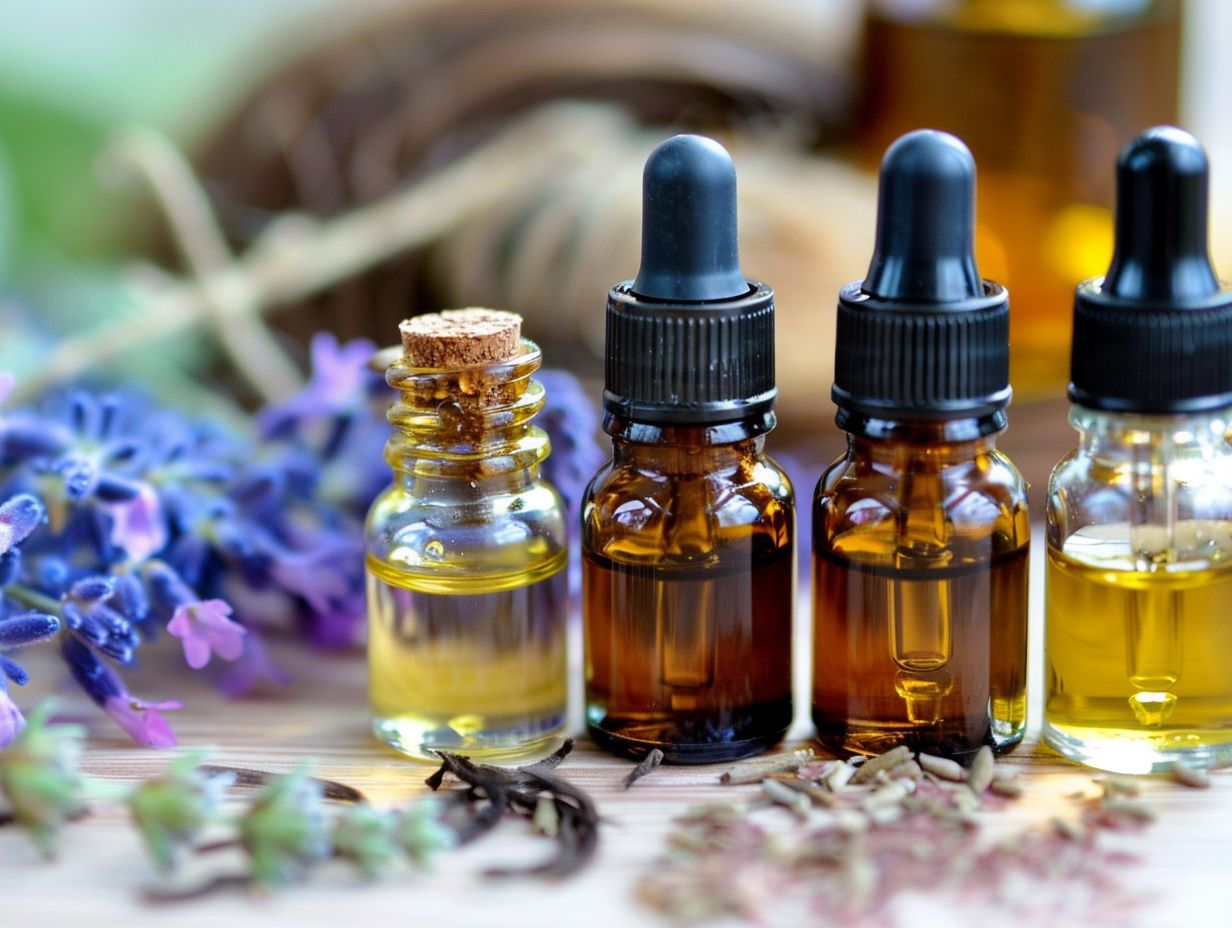
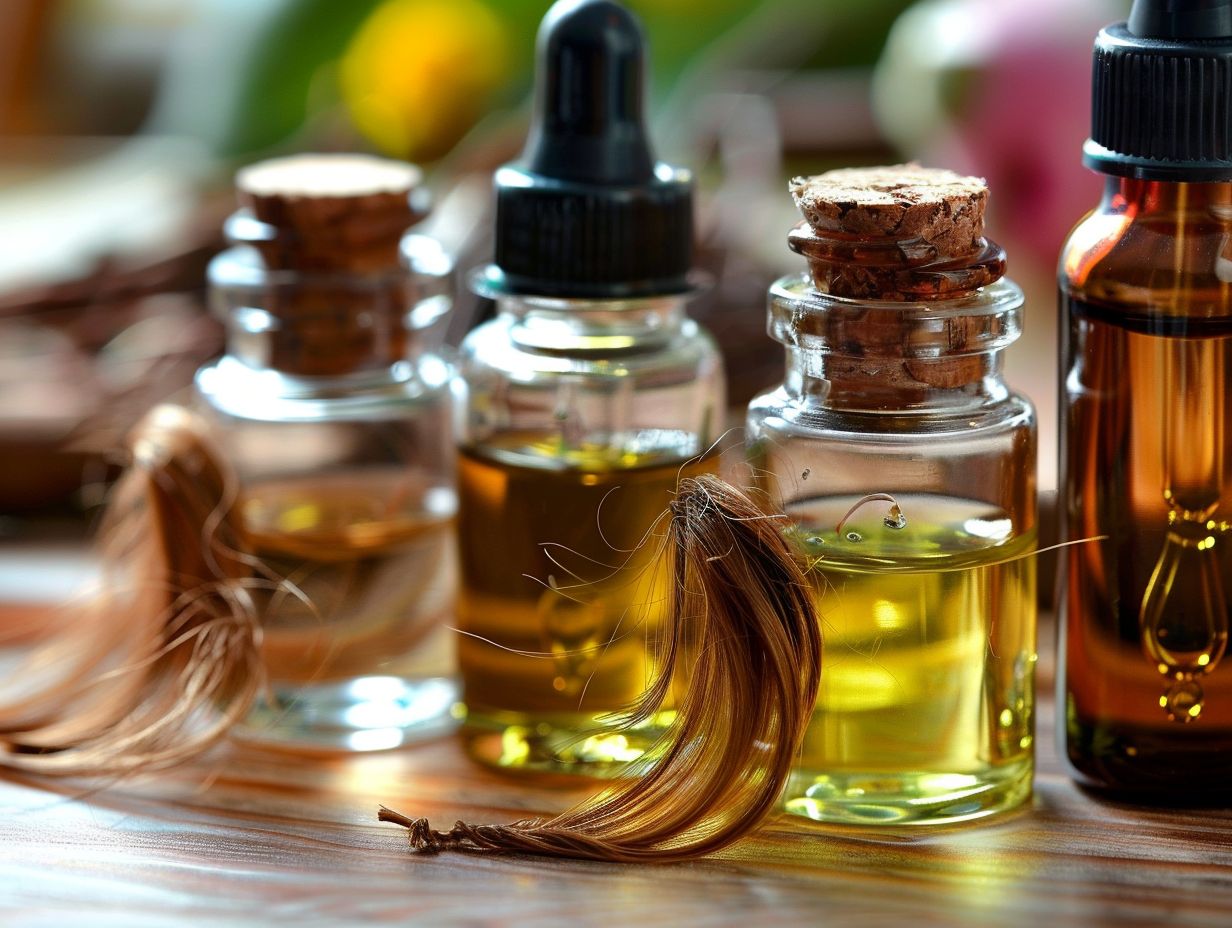

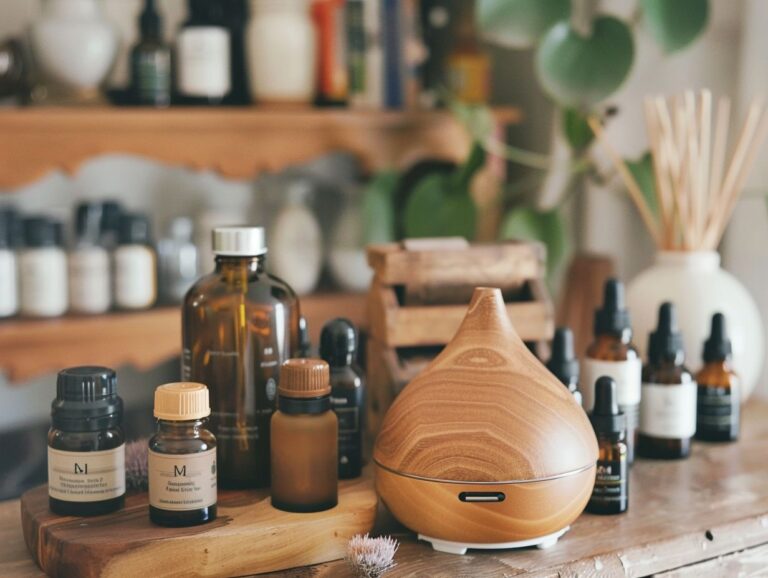
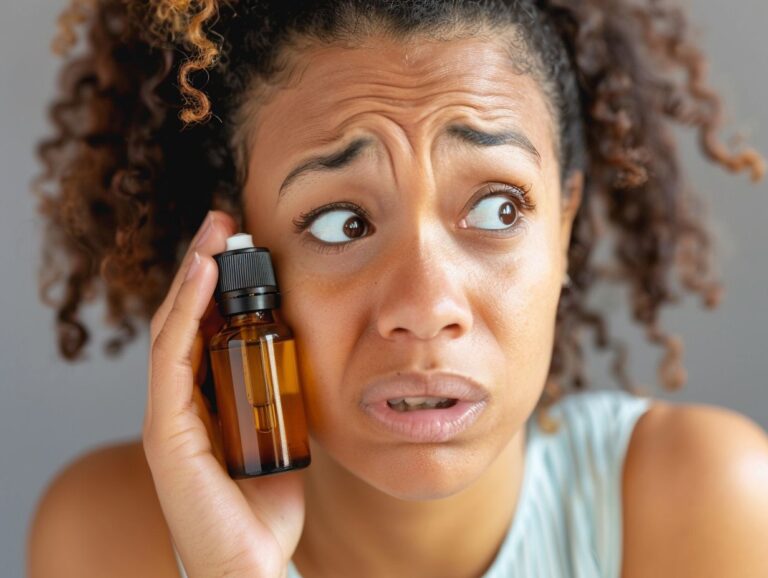
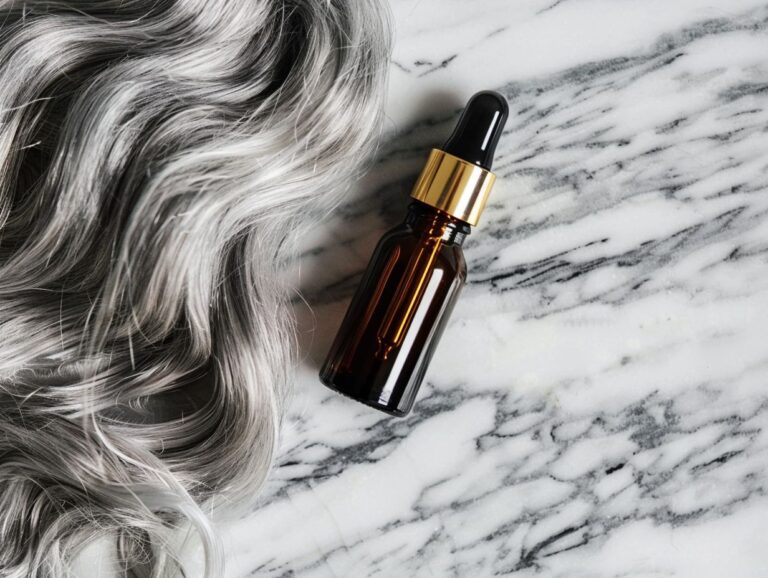
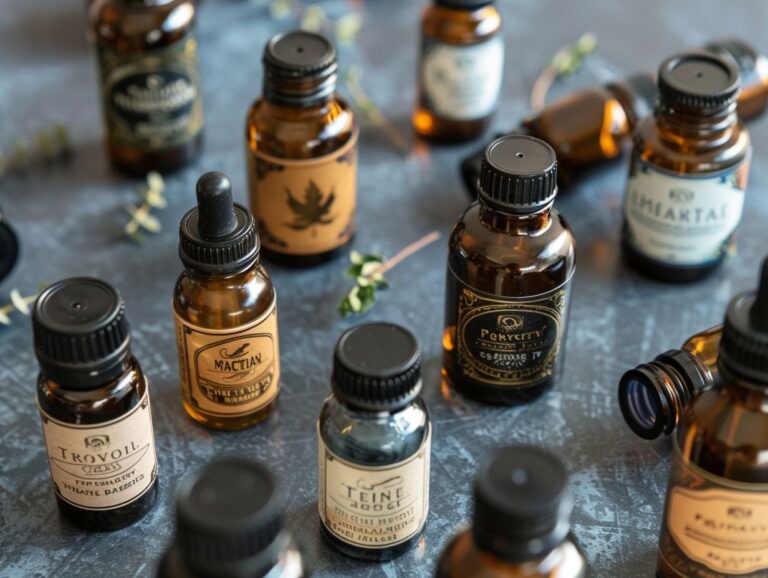

2 Comments